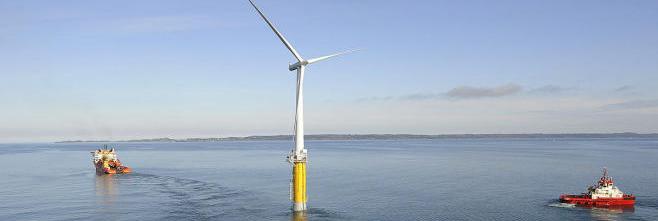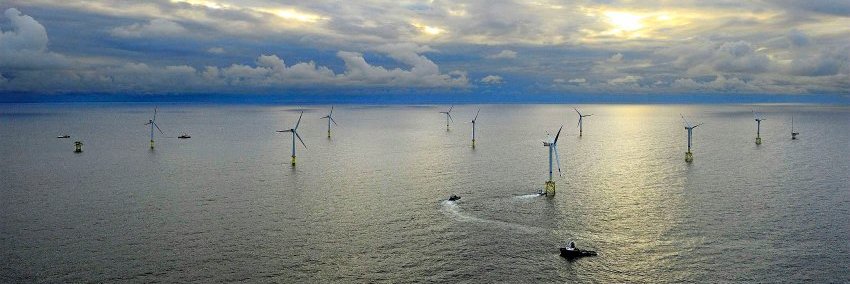The Fraunhofer-Gesellschaft is a non-profit research organisation operating 59 institutes in Germany. With 17 000 staff for 1,6 billion Euros turn-over, it is Europe’s biggest applied research organisation and undertakes applied research of direct utility to private and public enterprise and of benefit to society. Two Fraunhofer institutes are involved in the HiPRWind project:
The Fraunhofer-Institute for Wind Energy and Energy System Technology (IWES) arose in 2009 from the Fraunhofer Center for Wind Energy and Offshore Technology CWMT in Bremerhaven and the Institute for Solar Energy Supply Technology ISET in Kassel. Thanks to a rapid growth at its two locations and close collaboration with several universities, it is set to become Germany’s main research centre for wind energy. Its research activities cover the complete spectrum of topics in wind energy research and in energy system technology for all renewable energies. This includes
• Rotor blade technology with destructive and non-destructive testing facilities from coupons to full length MW-scale rotor blades
• SHM and reliability issues with novel sensor applications tested both in environmental chamber and on self-operated offshore test locations as well as an extensive statistical database on wind turbine reliability in German wind parks
• Advanced WT dynamic analysis and simulation with tools (co-)developed and validated in house
• Offshore siting with measurement and analysis tools to support decision-making and design of large-scale offshore wind parks
• Grid integration, covering both transmission systems in the wind park and to the shore as well as grid management tools for offshore and onshore renewable energy integration
• Control systems, using individual blade pitching for tower oscillation damping
The Fraunhofer-Institute for Non-Destructive Testing - IKTS - is concerned with the physical methods of non-destructive testing, the characterization of materials and the control and monitoring of manufacturing processes and components. The techniques and systems are used everywhere in the industry where safety related statements and quality proofs are a demand. Our methodological competence covers the physical bases of the methods and techniques, the sensor systems, the prototype design and manufacturing, manipulator systems, techniques for the evaluation and documentation of results as well as the qualification and validation of new applications and testing set-ups including equipment maintenance, training and testing services.
The Fraunhofer-Gesellschaft has to date been involved in more than 350 FP7 projects and brings together the necessary skills, experience and strong administrative backbone required to efficiently run big projects.
Fraunhofer IWES involvements in past and current Framework Programme projects include the Upwind project, where it e.g. coordinates the work package on condition monitoring. In Germany, Fraunhofer IWES coordinates the RAVE (research at Alpha Ventus) research initiative, which is funded by the German government with 50 Mio. Euro. IWES successfully runs a large number of national research projects and performs substantial industry funded research within wind energy and energy system technology. Furthermore, Fraunhofer IWES is involved in numerous international cooperations such as Nowitech, IEA Wind Annexes 19, 23, 25 and 30 and the Technology Platform Wind. Other projects are dealing with maintenance concepts for offshore wind turbines, condition monitoring, power prediction of renewables and grid integration of offshore wind farms as well as distributed generation and energy storage technologies. Fraunhofer IWES has developed commercially available tools for the dynamic simulations of energy systems such as the Alternative Power Library for Simplorer. The test labs offer opportunities for testing electrical components such as generators, frequency converters, inverters etc. with a power of up to some hundred kVA.
Fraunhofer IKTS-MD has experience in the development and application of SHM techniques in different fields of application. Monitoring techniques for railway structures and aircraft components have been developed as well as monitoring of rotor blades based on acoustic methods. Also IKTS-MD is currently participating in several important R&D projects related with rotor blade monitoring at national level. In these projects monitoring systems for rotor blades are under construction and first applications focused at monitoring of full scale fatigue tests are realized. The main activity of IKTS-MD is developing of advanced equipment for monitoring based on guided waves including the design and manufacturing of functional prototypes. At international level, IKTS-MD has joined several proposals in FP7 calls such as Safe Pipes: Safety Assessment and Lifetime Management of Industrial Piping Systems, IRIS: Integrated European Industrial Risk Reduction System, and under the Clean Sky JTI, Green Regional Aircraft, LWC (2008-2012).
At Fraunhofer IWES,
• the Research Group on Simulation and Evaluation of Wind Turbine will mainly participate in simulation code development and validation under WP 4 as well as contribute to the outlook in WP 8 with efficient models for very large offshore wind turbines.
• the Rotor Blades Competence Center will lead WP 7 in an effort to develop a new type of blade with active vibration damping and integrated structural health monitoring.
• under WP 6 and 7, the Research Group on Technical Reliability will test (both in the lab and on the floating platform) novel sensor applications and data processing tools to support the improved condition and structural health monitoring.
• the Research Groups on Control Engineering and Grid Integration will play a key role under WP5 in Tasks 5.2 and 5.3
• the Research Group on Offshore Site Assessment will contribute to environmental condition monitoring in WP 6 with a calibration campaign of the turbine wind measurements system by means of a ship-installed LIDAR system.
Fraunhofer IKTS-MD will be in charge of the development of SHM Systems for monitoring of rotor blades and floater. Acousto ultrasonic and acoustic emission techniques will be applied for monitoring the rotor blade and a guided wave based system will be fitted for floater corrosion monitoring. The main parameters of used techniques will be adapted to the structure and monitoring systems will be developed for these applications.








